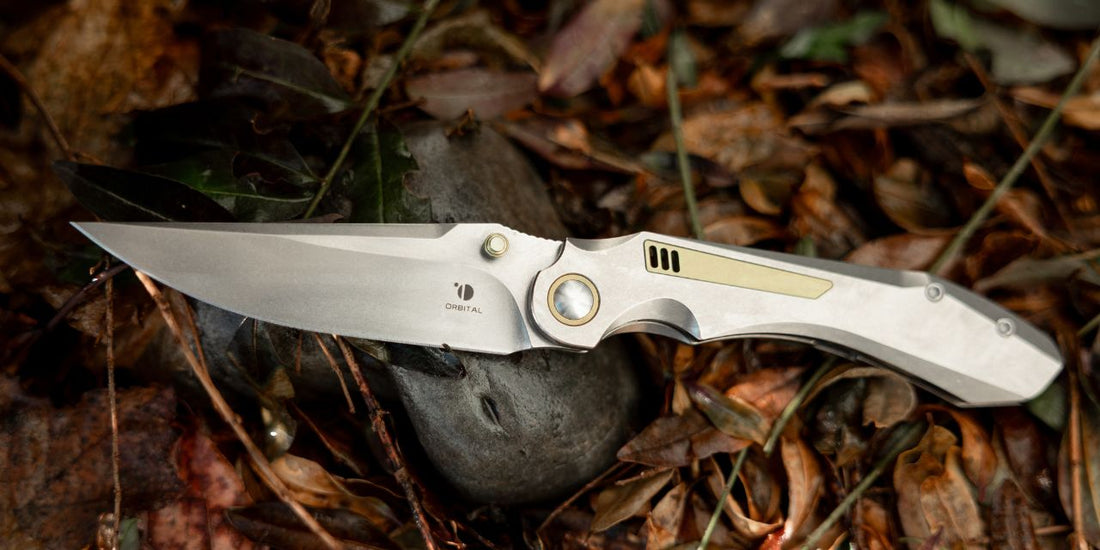For kitchen professionals, having the right tools at their fingertips is crucial. Among the myriad of tools, knives hold a special place, and their accessibility can significantly impact efficiency. This is where pocket clip positioning comes into play. A well-positioned pocket clip ensures that the knife is not only easily accessible but also safely secured when not in use.
While it might seem trivial to some, for those who spend hours perfecting their culinary craft, the positioning of a pocket clip can make a world of difference. It's not just about aesthetics or personal preference; it's about functionality and safety.

The Importance of Correct Pocket Clip Positioning
In the fast-paced environment of a professional kitchen, every second counts. A knife that is easy to access can save valuable time and improve workflow. Proper pocket clip positioning ensures that the knife is always at hand, reducing the time spent searching for the right tool.
Moreover, safety is a paramount concern. A poorly positioned pocket clip can lead to accidents, whether it's a knife falling unexpectedly or being difficult to retrieve. By ensuring that the clip is positioned correctly, professionals can minimize these risks, creating a safer work environment.
Factors to Consider in Pocket Clip Positioning
Several factors should be considered when determining the best pocket clip positioning for a knife:
- Accessibility: The clip should allow for quick and easy access to the knife. In a kitchen setting, this is crucial for maintaining the flow of work.
- Security: The knife should be held securely to prevent it from falling or becoming dislodged, which could pose a safety hazard.
- Comfort: The positioning should not interfere with the user's comfort. A clip that digs into the hand or causes discomfort can hinder performance.
Types of Pocket Clip Positioning
There are several types of pocket clip positioning, each with its own advantages and disadvantages:
Tip-Up vs. Tip-Down
One of the most common debates in the world of pocket clips is whether to opt for a tip-up or tip-down position. In a tip-up position, the blade's tip points upwards when clipped into a pocket. This positioning is often preferred for its quick deployment, as the knife is already in the correct position when drawn. On the other hand, a tip-down position points the blade's tip downwards. Some argue that this positioning is safer, as it minimizes the risk of the blade opening accidentally.
Left-Handed vs. Right-Handed
Another consideration is whether the clip is positioned for left-handed or right-handed use. Most knives are designed for right-handed users, but there are options available for left-handed professionals. Ensuring the clip is on the correct side can greatly enhance ease of use and accessibility.
Enhancing Efficiency with Proper Clip Positioning
For kitchen professionals, efficiency is key. By understanding the nuances of pocket clip positioning, chefs can enhance their workflow and productivity. A well-positioned clip can make the difference between a smooth, seamless cooking process and one filled with interruptions and delays.
In addition, a properly positioned clip can extend the lifespan of a knife. By reducing wear and tear, professionals can ensure that their tools remain in top condition for longer, providing better performance over time.
Exploring Different Knife Types
Understanding the various types of knives and their specific requirements can further aid in determining the best clip positioning. For instance, folding knives may have different needs compared to fixed-blade knives.
For more insights into knife handling and maintenance, you can explore resources on knife pivot tension adjustment.
Discover the advantages and disadvantages of various knives to make informed decisions about your kitchen tools by visiting Tacknives USA.
Conclusion
In conclusion, pocket clip positioning is much more than a minor detail for kitchen professionals. It is a crucial element that impacts accessibility, safety, and efficiency. By understanding and implementing the best positioning practices, chefs can enhance their culinary experience, ensuring that they are always prepared to create their next masterpiece.

Frequently Asked Questions
Why is pocket clip positioning important in a kitchen setting?
Proper pocket clip positioning ensures quick and safe access to knives, enhancing efficiency and safety in a fast-paced kitchen environment.
What are the differences between tip-up and tip-down clip positioning?
Tip-up positioning allows for quicker deployment, while tip-down is often considered safer as it minimizes the risk of accidental opening.
How can I determine the best clip positioning for my knife?
Consider factors such as accessibility, security, and comfort. It's also helpful to understand the specific needs of different types of pocket knives.
This article contains affiliate links. We may earn a commission at no extra cost to you.


























